The last thing you want to do is overwhelm your prospects with cold emails.
How many cold emails should you send? We have the answer.
The answer is between 4 and 9 follow-up emails.
We analyzed the reply rates of millions of lemlist cold outreach campaigns.
What is a cold email follow-up?
A cold email follow-up is an email sent to a recipient who has not responded to your initial cold email.
The purpose of the follow-up is to re-engage the recipient and hopefully spark their interest in what you’re offering.
Why Follow Up? People are busy, and your initial email might get overlooked.
A follow-up email reminds them of your initial message and gives them another chance to connect.
How many follow-up emails are appropriate?
In cold sales outreach, you should send between 4-9 follow-up emails.
According to our analysis of millions of cold emails, your overall reply rates increase with every follow-up.
But after 9 or more follow-ups, the benefits are negligible, and you could be marked as spam.
Let’s dive deeper into the analysis.
To test this, we measured the average reply rates of the individual emails sent in lemlist cold outreach campaigns.
Unsurprisingly, the first email gets the best average reply rate, and after that, the reply rate per email decreases steadily.
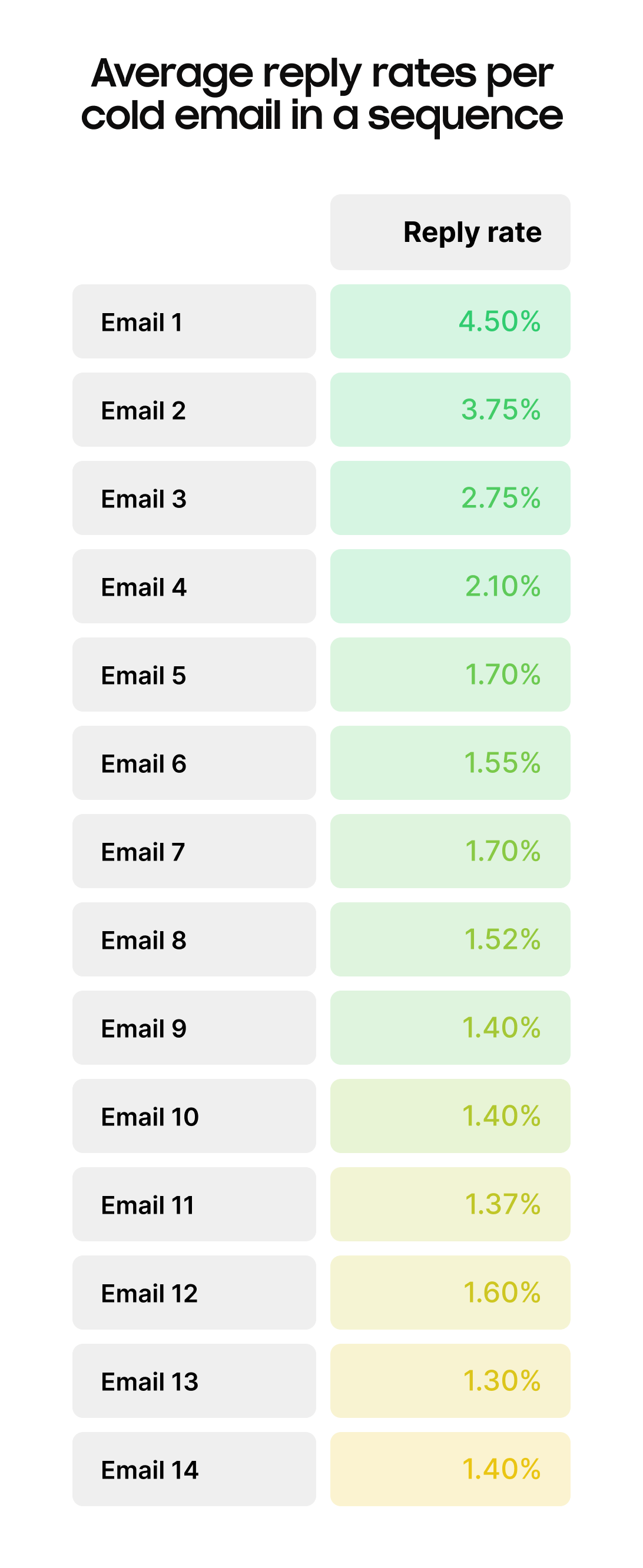
Of course, seen individually, reply rates below 2% don’t seem that impressive.
But when you look at the cumulative effect of each follow-up, you’ll see the combined reply rate rises above 20%.
If you send one email, you’re looking at an average reply rate of just 4.5%. But if you go up to 10, your total reply rate reaches as high as 22.37%.
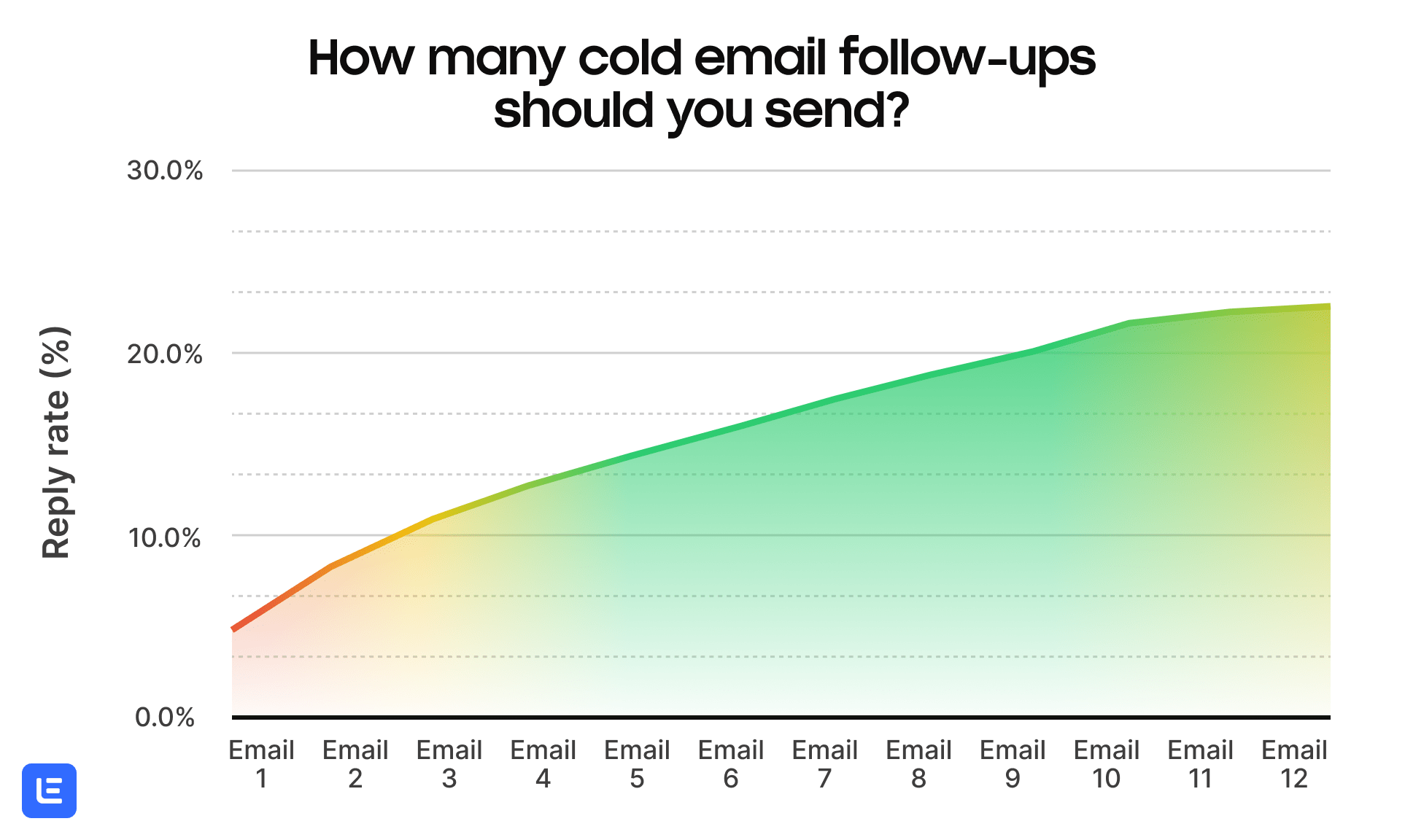
Let’s break it down into more concrete numbers.
Say you send a cold email campaign to 300 prospects. If you stop after the first point of contact, with an average reply rate of 4.5%, you might get about 14 replies.
But if you continue, you can get an average of 4-10 replies per follow-up, leading to a total of 60+ replies at the end of the campaign.
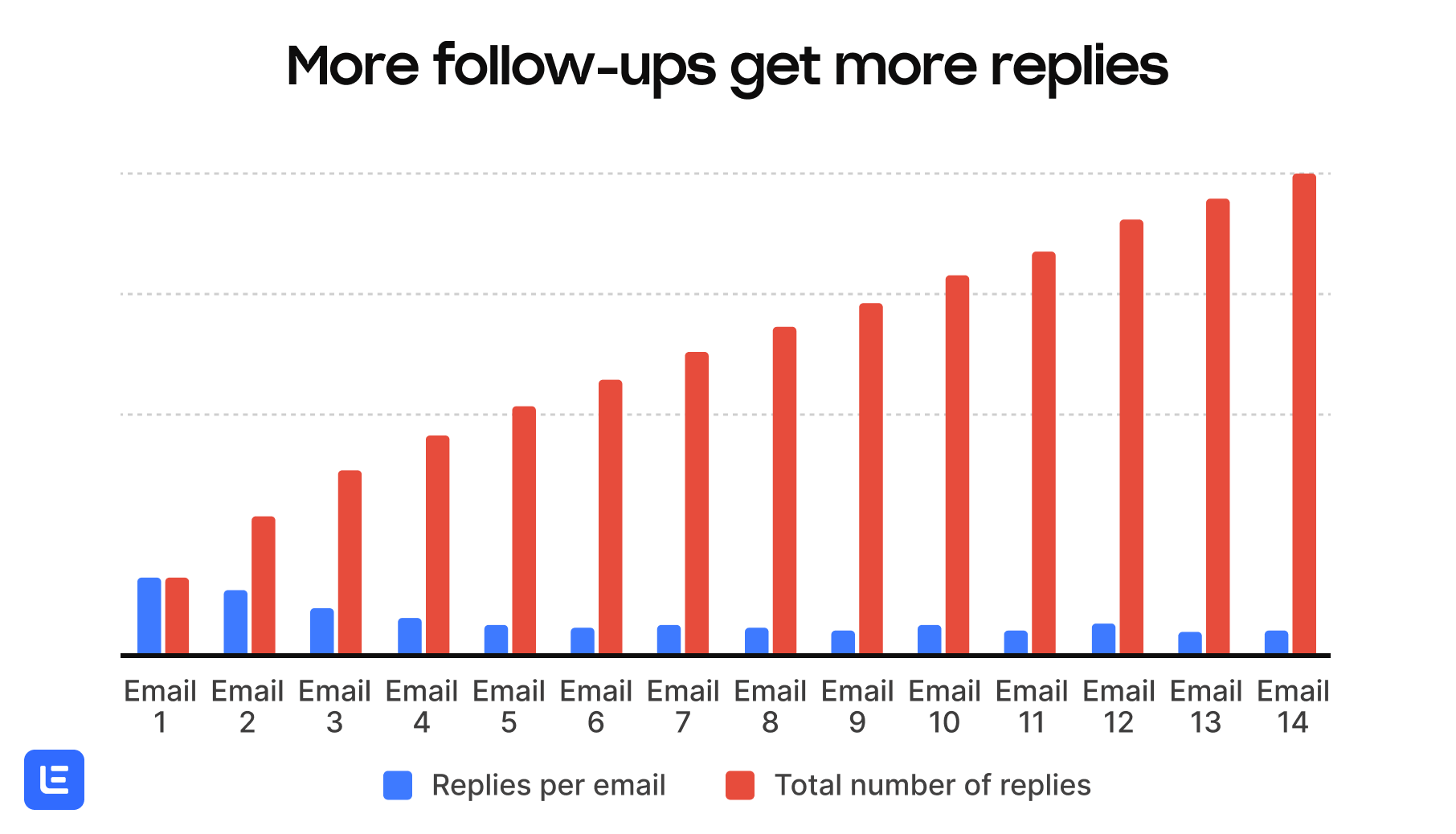
So don’t give up after the first or second email. Many prospects just need a reminder or an extra detail or two before they’re ready to reply.
Now that you know how many follow-ups to send, let’s get into how and when you should send them.
How long should you wait between follow-up emails?
Studies show that if a recipient is going to reply to your email, there’s a 90% chance they’ll do it in the first 2 days.
So leave at least 2 days between your first and second point of contact, then give them a bit more time in between emails as you continue to follow up.
Here’s the frequency we recommend:
- 2-day delay between emails 1 and 2
- 4-day delay between emails 2 and 3
- 4-day delay between emails 3 and 4
- 5+ days between follow-ups after the 4th email
Depending on how many messages are in your sequence, aim for a total duration of 10-25 days.
The key here is to be persistent, but polite. If they’re not responding to your first email after 2 days, don’t expect them to respond faster after your 3rd or 4th.
And, of course, if they respond saying that they are not interested, do not continue to follow up.
How to write cold email follow-ups
When writing your follow-up email, keep these best practices in mind:
→ Add value with every new email (i.e. don’t just say “checking in!”)
→ Avoid guilt-trip phrases like “I’m busy too,” or “just wondering if you got my last email…”
→ Keep your messages short (around 120 words, while maintaining enough context for the prospect to understand why you’re emailing them.
Here’s an example of a follow-up e-mail that can boost your click-through rate to +36%:
Here’s an example of a follow-up email that got an 86% open rate and a 71% reply rate:
Hi {{firstName}},
Not sure if you’ve seen my last email, but I’m going to make this one super quick in order to not waste your time.
I’m 100% confident that the collaboration between {{companyName}} and [YOUR COMPANY] is a match made in heaven. Here’s why…
{{strongArgument}}.
Plus, all indicators suggest that once we release it, it’s going to be a major hit, and it will bring us a lot of attention.
Let me know {{firstName}} as I’m super interested to hear your thoughts.
Stay safe,
{{signature}}
This follow-up works because it references the previous step to make a quick transition, and because it adds value.
If you want to use this template, do your research and replace the {{strongArgument}} custom tag with a sentence that will be different and personalized for every prospect.
Remember to focus on the prospect, not you, which means a lot of “you” and no “I” in your cold email copywriting.
To check out more templates like these, duplicate this campaign, where you’ll find plenty of different follow-up emails.
Here’s another example:
Hi <fancy>{{firstName}}<fancy>,
Don’t wanna be an annoying bore so I’m sending a quick follow-up and leaving you alone afterward.
That’s a promise.
[ADD A FUNNY GIF]
Take care,
<fancy>{{signature}}<fancy>
This follow-up got a 67% open rate and a 33% reply rate.
Here’s why it worked:
- Since the first email failed to generate replies, the sender decided to make this follow-up special and light.
- The custom image is there to grab attention. And the fact that it’s a GIF just makes it even more eye-catching
Want more examples for your follow-up emails? Check out these 9 cold email follow-up templates to get more replies.
To make your follow-ups more effective: go multichannel
So far, we’ve been investigating the reply rates of cold email campaigns. But one important way that you can boost your results is to go multichannel.
Multichannel prospecting is a sales tactic that involves using multiple channels at the same time to communicate with your prospects. This includes:
- Cold emailing
- More social selling options (e.g. Twitter, Communities, etc)
You want to use the channels simultaneously so you can reach your lead on the platform that works best for them, which helps increase your response and booked meetings rate.
Here’s what the data says about adding social selling to your cold outreach:
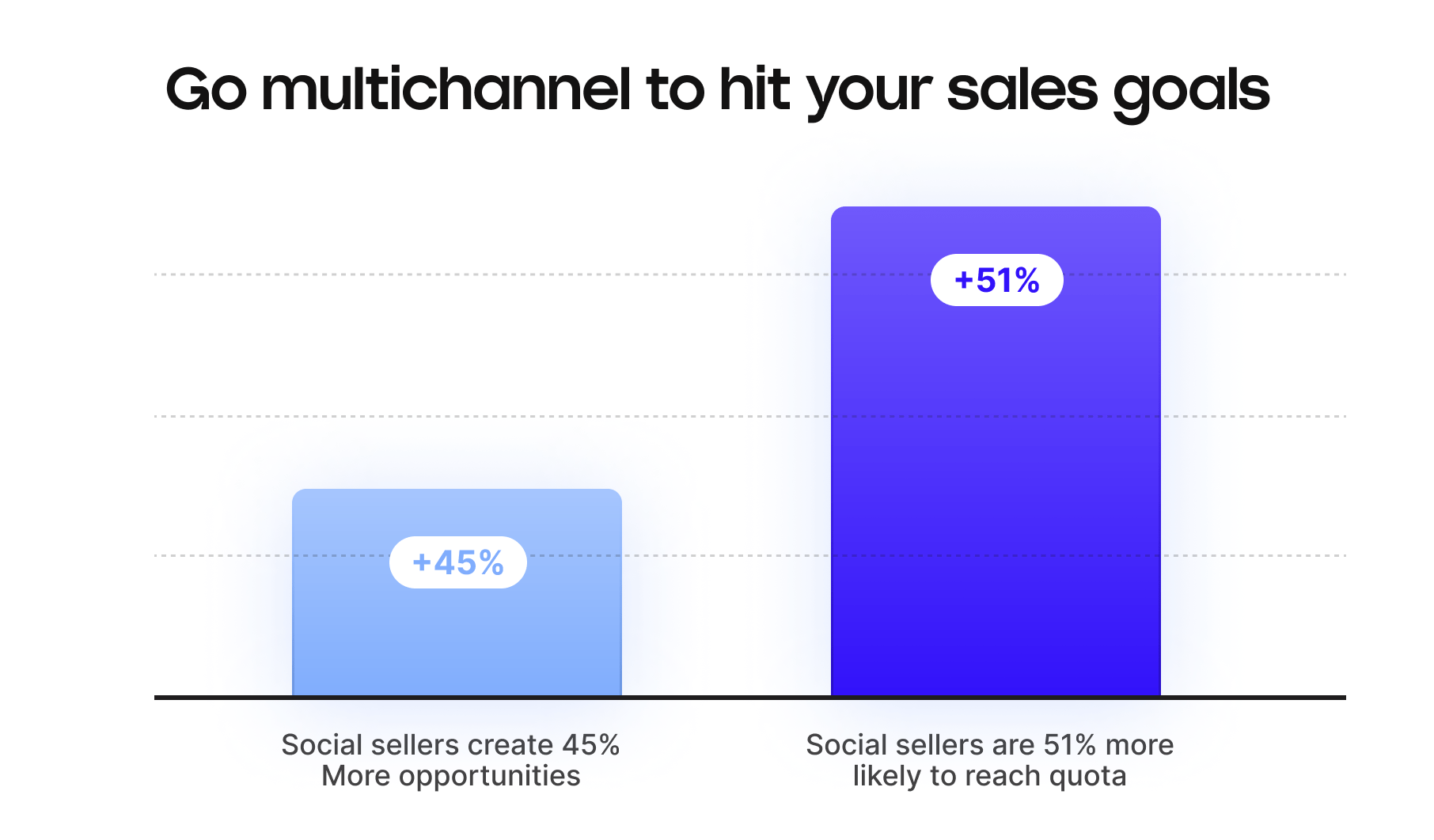
Sales reps who build personal brands on social media sites like LinkedIn get 45% more sales opportunities, and those who use it as a sales channel are 51% more likely to hit their sales quota.
So your campaign becomes multichannel, add LinkedIn profile visits, messages, cold calls, and other points of contact that meet prospects where they are.
Replace some of your 4-9 cold email follow-ups with these steps so that you’re not contacting them more than 10 or 11 times in total.
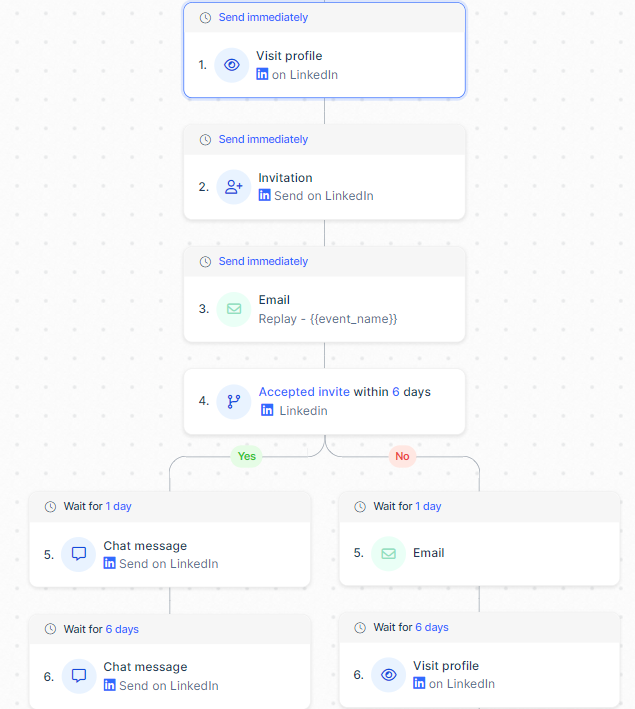
For the complete guide to multichannel outreach, use our step-by-step breakdown of multichannel prospecting, with examples of the most successful sequences.
Additionally, in the lemlist academy, you can find an array of lessons on how to use lemlist to build relationships with your leads at scale and grow your revenue. It also features a lesson to help you get started with multichannel campaigns.
How to send follow-up emails at scale
So, you should be sending 4-9 points of contact per campaign, spaced apart by 2 to 5 days, with personalized messages that address your prospects’ pain points.
You can of course do this manually, but writing out every single email and following up at the appropriate time will take hours out of your week. Plus, you’ll have to be careful to keep track of your prospects and follow-ups so that nobody falls through the cracks.
Another option is to use a sales automation tool like lemlist.
With lemlist, you can set up an automated multichannel sequence, including email, LinkedIn profile visits, messages, and connection requests, and manual tasks like cold calls and voice messages.
There are text, image, and video variables to personalize to every prospect, and you can stop the sequence automatically when prospects reply.
Here’s how to set it up:
Step 1: Sign in to app.lemlist.com. If you don’t have an account, you can create one here for free.
Step 2: Create a new campaign, and pick the steps you would like to include. Edit the number of days to wait before sending each new step.
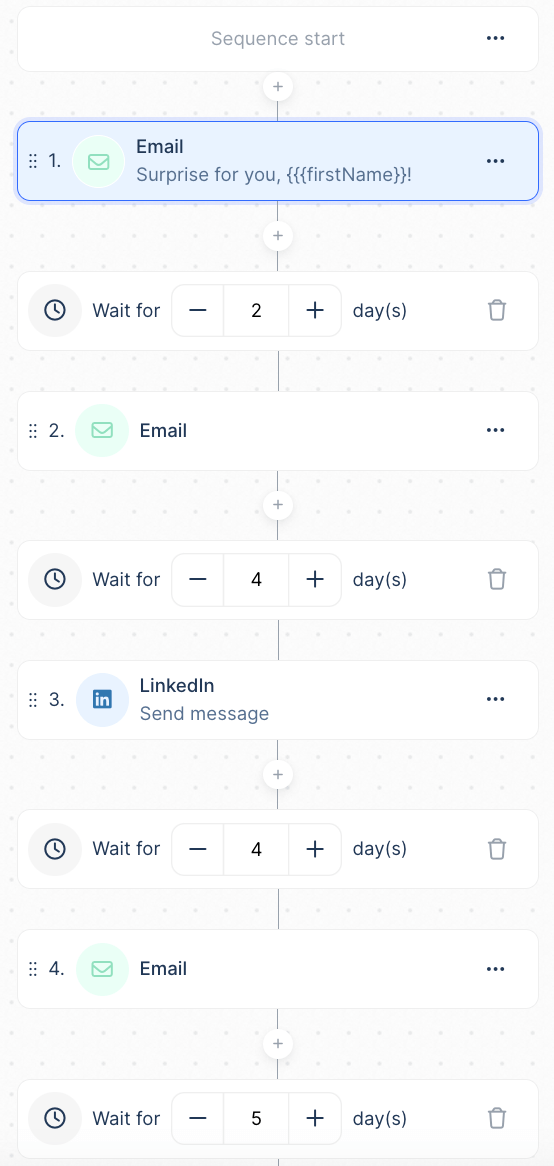
Step 3: Fill in the content of each step. You can use preset templates and variables to customize your message for each prospect.
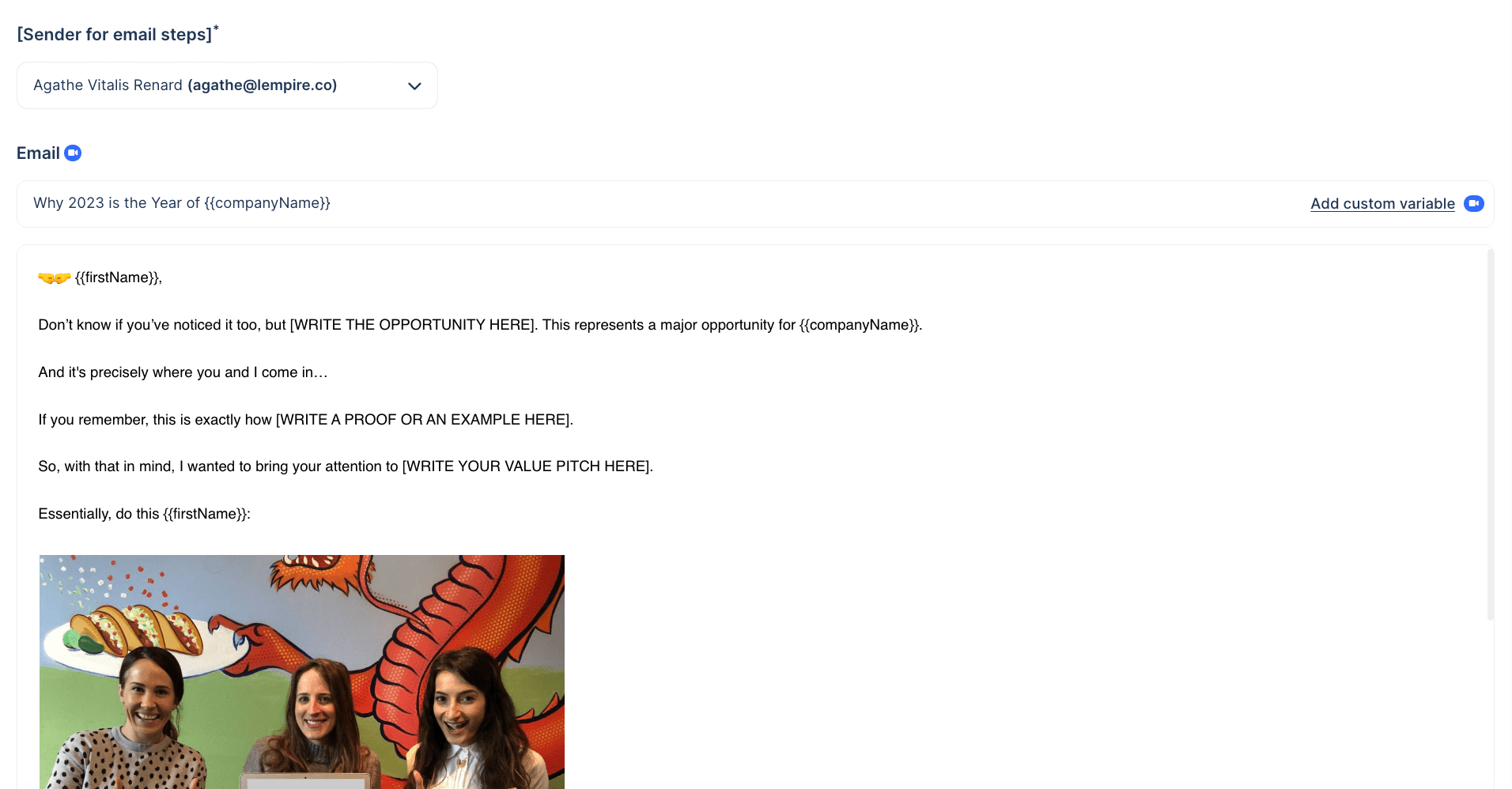
Step 4: Import your contact list

Step 5: Go to campaign settings to stop the sequence when a lead replies, books a meeting or clicks on a link. This way they won’t continue to get follow-ups when they’ve already gotten back to you.
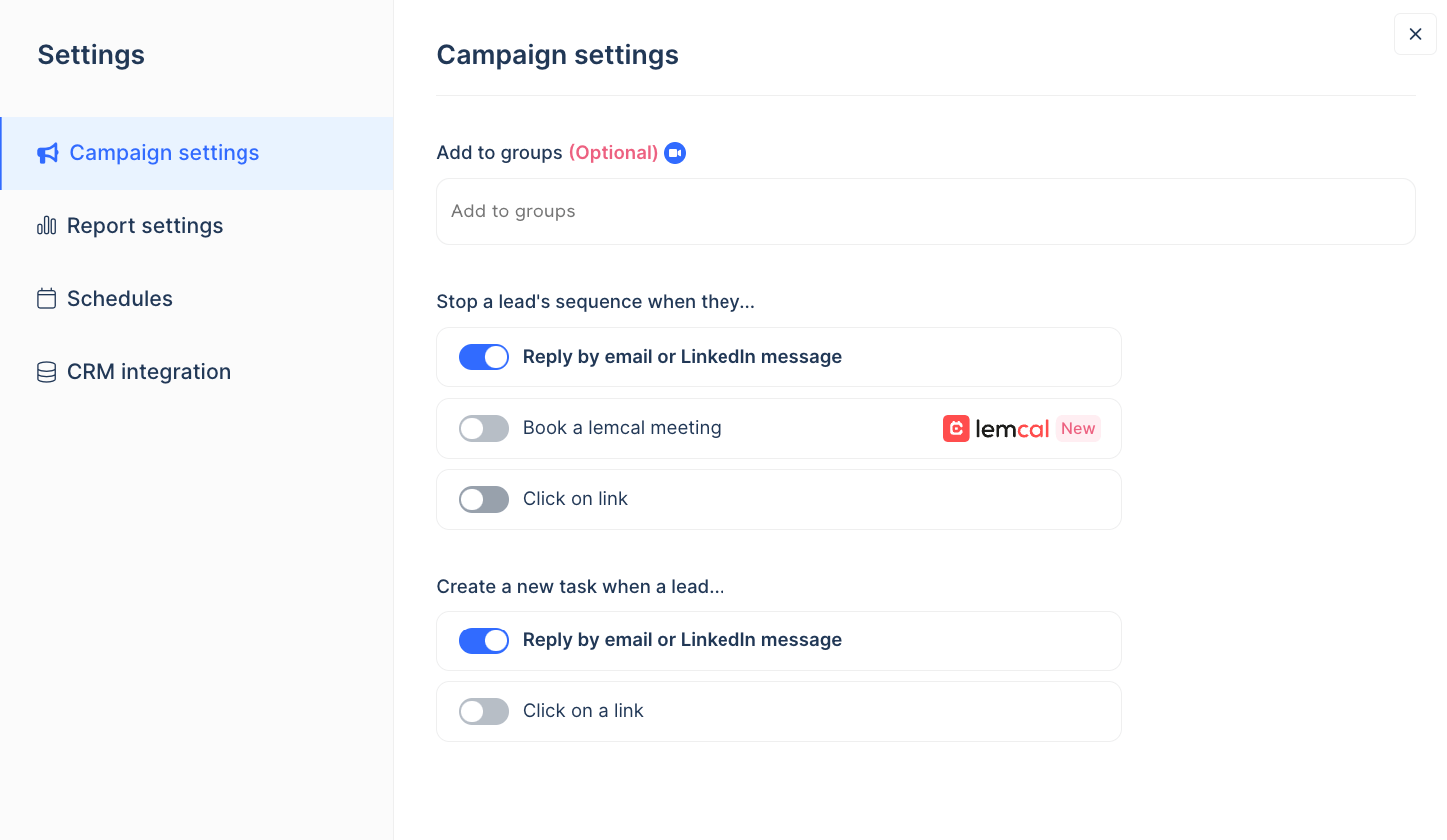
Step 6: Review your contacts and messages, and send!
Last tips to start your sequence!
Here’s a quick reminder of what you should know about cold email follow-ups:
- Send 4-9 follow-up emails in your cold sales outreach to maximize reply rates.
- Avoid sending 9 or more follow-ups so you’re not marked as spam.
- Space your follow-up emails with at least a 2-day delay between the first and second contact, followed by 4-day intervals up to the 4th email, and 5+ days after that.
- Add value with your follow-up emails, avoid guilt-tripping language, and keep your messages concise (around 120 words).
- Enhance your cold email campaigns by adopting a multichannel prospecting strategy, to increase response rates and generate more sales opportunities.
And if you’re looking for a tool that will help you book meetings with 17% of your leads, try lemlist for free.
Your source of actionable outreach tips and strategies that will help you get replies and grow your business.


